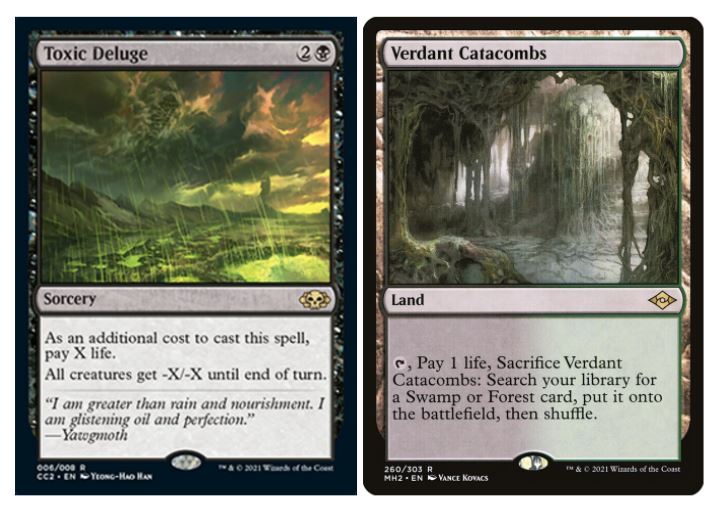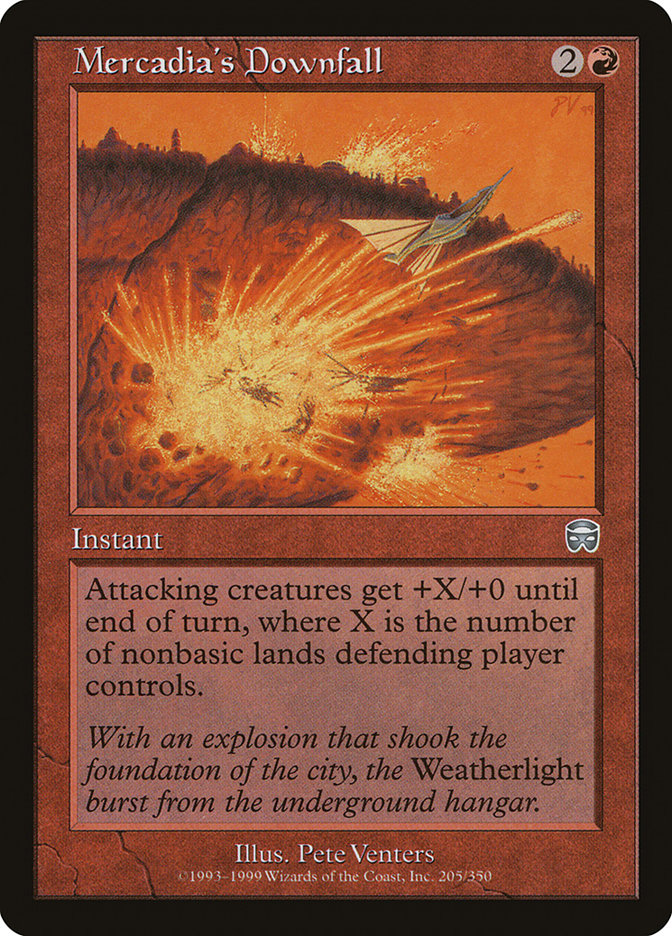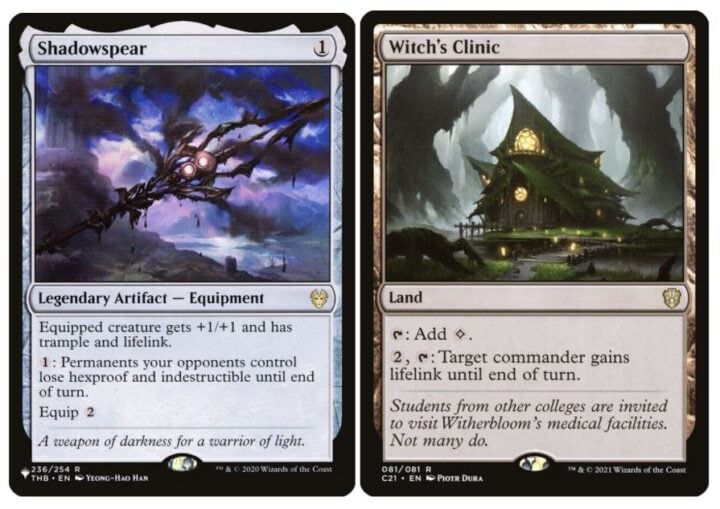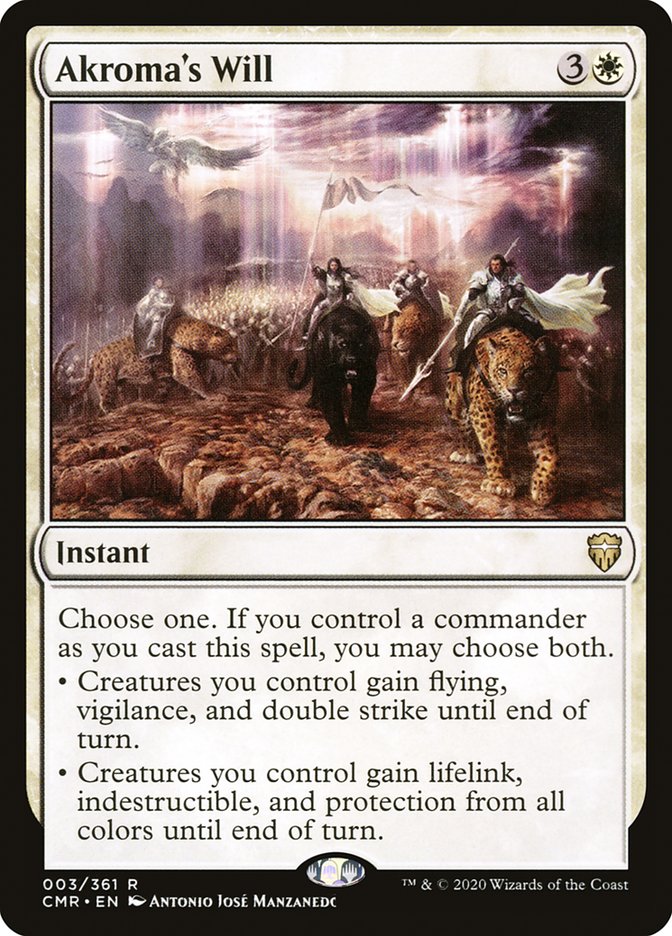Kristen asks a question you should be asking yourself in a game of Commander: How much life is an extra turn worth?
So, I was a little devious when I recently put up a poll on Twitter. I asked people how much life they thought was fair to pay to take an extra turn in EDH if the spell cost two or three mana. Usually, extra turn spells are five mana or more, and the two-mana Time Walk is banned in the format.
There was a lot of great engagement with the poll, and the feedback for the most part was very revealing about players’ approaches to the format. One of the biggest concerns was ensuring such a spell wasn’t “broken”; namely, that it couldn’t be copied, and, rather than paying life as an additional cost, it should change your life total on resolution.
Now, this poll and conversation was all a bit of a ruse, because I’m not designing an extra turn spell at all. I’m more interested in helping people understand just how relevant lifegain and lifelink are in the current climate of casual EDH.
Eat Life by the Bowlful
The goal of any game of Magic is to eat up your opponent’s life total. Along the way, players often eat their own life total, spending it on resource generation or casting spells ahead of curve. As we often say in Magic, your life total is a resource – and ending a game on next to zero life is the same as winning it at 100 – but I do believe that casual Commander players are concentrating on the transactional nature of life totals in predominantly one direction.

Life is used as a resource constantly in Commander, from fetchlands to removal, from mana generation to card draw. Though cards like Treasonous Ogre and Necropotence take this to the extreme – and show up predominantly in higher power or combo-based builds for that reason – they’re emblematic of what sets Commander apart from other formats. You need to worry less about a Lightning Bolt, that’s for sure – though I’ll say my kill count with Boros Charm’s burn mode is in the double digits.

While you should worry less about a card like Lightning Bolt, that doesn’t mean you have nothing to worry about. What you have to worry about these days is the fact that alpha strikes have never been easier, or indeed cheaper. Akroma’s Will can drop to finish you on a whim; Mercadia’s Downfall is Sheldon Menery’s trick of choice; Voltron decks regularly pack a Kazuul’s Fury as an emergency button.

It costs a lot less mana to claim a “bowlful” of an opponent’s life these days, and this can be exemplified in my own approach to deck building. I recently overhauled Sylvia & Khorvath, changing it from a dual-tribal deck over to a deck concerned with playing cheap Dragons and giving them double strike. Sylvia is essentially an anthem, with Khorvath there to give us access to red; read more on this deck transformation at Commander’s Herald.
How Much Life is an Extra Turn Worth?
So, back to the poll that spawned this article in the first place. I’ve spoken before on the fact that lifelink and haste are the two most underrated keywords in Commander, and I think this is true now more than ever. The winning poll answer was that people expected to pay 10-15 life as an additional cost (or as an effect on resolution) of casting a three-mana extra turn spell.

Three mana, you say?
I can’t claim to be such a mastermind as to have picked three mana for my hypothetical for this exact reason, but it is kinda poetic to see that two of the most universal and useful ways to gain incidental life in the format cost three mana at face value. Nobody is denying that Shadowspear and Witch’s Clinic are good cards, and their price values reflect that. I also think savvy players are already with me on the idea that incidental lifegain is good.
So, if we can agree that an extra turn is worth 15 life or so, how does that work in practice? Well, it means investing in incidental lifegain even when gaining life isn’t the goal of your deck. So what if you’re not a lifegain deck, or you aren’t actively spending your life total in black. As I alluded to earlier, the life transaction isn’t only in one direction.
Buy an Extra Turn By Gaining Life

And there it is – what I’ve been leading to. The fact that you can buy yourself an extra turn purely by gaining life. How many games have you been sitting there, dying to a lethal attack that you were sure you couldn’t see coming? How many times has the table turned on you, convinced you’re the arch enemy? It happens a lot – and even more frequently, the person with no blockers turns into a punching bag for creatures whose abilities trigger off of combat damage or attacking. You never want to be that player, because even if chip damage is to be expected and nothing to get upset about, it does add up.
While the answer, in some regards, is to play more blockers, a good blocker isn’t always the same as a low-drop that will positively impact your deck. Utility creatures aren’t thrown under the bus often save for big swings or to block Commander damage, after all. So, if you can’t rely on having blockers to keep you alive, then perhaps instead, you should invest in some lifegain.
True Conviction, in particular, is a spell that single-handedly closes the door on games. I dropped it recently in my Liesa, Forgotten Archangel deck with just Liesa and an Angel of Despair on board. The resulting 18-point life swing all but ended the chances of winning the game for one of the players at the table. I was firmly in the driver’s seat, given the comfort to swing out without the chance of a lethal crack-back, and ensuring that any player who didn’t reserve creatures to block with was in a losing position.
It’s kinda hard to tell who is the beatdown in Commander sometimes, given that there are so many factors – not least having three opponents – that can affect who, when, and how you attack. One thing’s for sure, though: you’re never in a better position to be on the beatdown than when you’re gaining big chunks of life!
Get a Life
While many in the past have debated about how much lifegain is worth a card, I think that’s besides the point when it comes to Commander. What you should instead be questioning is if it’s worth opting for some lifegain alongside effects you already want.

When I look at card draw, for instance, I often opt to include some lifegain if I can. Momentous Fall is great because it can be used reactively, and Shamanic Revelation is a lot harder to blow someone out on in a format where bounce spells aren’t in vogue. Reckoner’s Bargain is a newcomer on the block, and while many will instantly favor Deadly Dispute for the Treasure, there’s a bunch of decks where I’d be happy to take Bargain first.

Beyond card draw, look to other effects. A card like Akroma’s Will can be used flexibly as both protection and a finisher. It’s at these points in your deck building process that you need to consider baking in some incidental or intentional lifegain, and it pays dividends.
I think we can reframe lifegain by thinking of it like cracking a healing potion in a video game. You don’t crack them when you’re dying – you crack them when your health dips below half, so that you can keep out of one-shot range. I’d further this comparison by suggesting that lifegain is “comfy”; a quality of life term in gaming that indicates taking some pressure off of the need for a perfect run by augmenting your build. This “comfy”-ness can relieve some of your cognitive load, or just allow you to have a more relaxed experience achieving a goal.
Lifegain is comfy, and it can literally buy you extra turns. You should include more of it in your casual builds.

Kristen is Card Kingdom’s Head Writer and a member of the Commander Format Panel. Formerly a competitive Pokémon TCG grinder, she has been playing Magic since Shadows Over Innistrad, which in her opinion, was a great set to start with. When she’s not taking names with Equipment and Aggro strategies in Commander, she loves to play any form of Limited.

